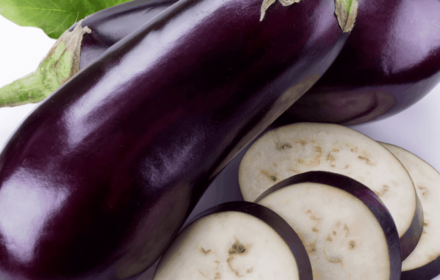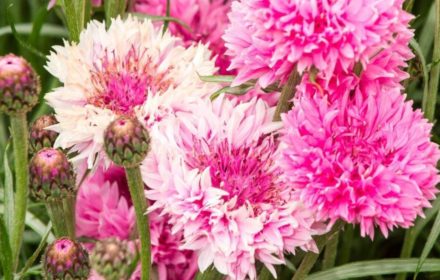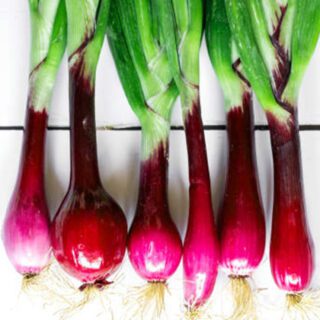How to Grow Blue Sapphire Trailing Lobelia from Seeds
Blue Sapphire Trailing Lobelia (Lobelia erinus) is a stunning addition to any garden, producing masses of vibrant sapphire blue flowers with a distinctive white eye. This low-growing, trailing plant is perfect for hanging baskets, window boxes, tubs, and rockeries, providing a cascade of colour throughout the summer months. With its delicate, bronzy-green foliage and long, trailing habit, it creates a spectacular display when paired with other summer bedding plants. Follow this guide to successfully sow and grow Blue Sapphire Trailing Lobelia in your garden.
When and Where to Sow Blue Sapphire Lobelia Seeds
- Indoor Sowing: Start seeds indoors 8-10 weeks before the last expected frost, typically from February to April. This early start allows the plants to develop well before being transplanted outdoors.
- Location: Lobelia thrives in a variety of settings, including hanging baskets, containers, and rockeries. Choose a sunny to partially shaded spot with well-drained soil for the best display.
Preparing to Sow Lobelia Seeds
- Handling Small Seeds: Lobelia seeds are tiny, making them challenging to handle. To improve sowing precision, mix the seeds with a small amount of horticultural sand before sowing. This will help distribute the seeds more evenly.
- Seed Compost: Use a fine, well-draining seed compost. Gently firm down the compost in seed trays or small pots, creating an even surface for sowing.
How to Sow Blue Sapphire Lobelia Seeds Indoors
- Sowing Depth and Method: Sow the seeds very thinly on the surface of the compost. Do not cover the seeds with compost, as they require light to germinate. Gently press the seeds into the soil using a piece of cardboard or the back of a spoon.
- Germination Conditions: Place the trays in a warm area with temperatures maintained between 18-24°C (65-75°F). To retain moisture and humidity, cover the trays with a clear plastic lid, polythene bag, or cling film. Ensure there is good air circulation to prevent mould growth.
- Light and Moisture: Keep the compost consistently damp but not waterlogged. Light is essential for germination, which usually occurs within 10-21 days. Place the trays in a bright location, but avoid direct sunlight that may overheat the seedlings.
- Transplanting Seedlings: When seedlings are large enough to handle (typically when they have several true leaves), transplant small clusters of seedlings into trays or individual pots. Grow on in cooler conditions, around 15-18°C (59-64°F), to encourage strong, healthy growth.
Hardening Off and Planting Out
- Hardening Off: Gradually acclimatise the young plants to outdoor conditions by placing them outside during the day and bringing them in at night for 7-10 days. This process helps reduce transplant shock and prepares the plants for outdoor growing.
- Planting Out: Once all risk of frost has passed (usually from late May to early June), plant the lobelia into their final positions. Space the plants approximately 10-15 cm (4-6 inches) apart in hanging baskets, containers, or garden beds.
- Planting Depth and Location: Choose a sunny to partially shaded spot with well-drained soil. Lobelia can tolerate light shade but will flower more profusely in full sun. Ensure the soil is moist but well-drained to support healthy root development.
Caring for Blue Sapphire Lobelia Plants
- Watering: Keep the soil consistently moist, especially during dry spells. Lobelia has shallow roots and can dry out quickly, particularly in containers. Water regularly, but avoid overwatering, which can lead to root rot.
- Feeding: Feed the plants with a balanced liquid fertiliser every 2-4 weeks during the growing season to promote lush growth and abundant flowering. Avoid high-nitrogen fertilisers, as these can encourage excessive foliage growth at the expense of flowers.
- Pruning and Maintenance: Regularly pinch back the growing tips to encourage a bushier habit and remove any spent flowers to extend the blooming period. If the plants become leggy or overgrown, trim them back lightly to rejuvenate their appearance and encourage new growth.
Managing Pests and Problems
- Pest Control: Lobelia is generally pest-free, but watch out for slugs and snails, especially on young plants. Use organic slug pellets or copper tape around containers to deter these pests.
- Disease Prevention: Ensure good air circulation around the plants to prevent fungal diseases such as powdery mildew. Avoid overhead watering, and water at the base of the plants to keep the foliage dry.
Using Blue Sapphire Lobelia in the Garden
- Hanging Baskets and Containers: Blue Sapphire Lobelia’s trailing habit makes it ideal for hanging baskets and containers. Combine with other summer bedding plants like petunias, geraniums, or trailing ivy for a colourful and vibrant display.
- Rockeries and Edging: Use lobelia to create a soft, flowing effect in rockeries or as edging along paths and borders. Its compact growth and vivid blue flowers add contrast and texture to garden designs.
- Mixing with Other Plants: Pair Blue Sapphire Lobelia with plants in similar shades, or mix with contrasting colours like bright yellows and reds for a striking summer display.
Common Questions About Growing Blue Sapphire Lobelia
Can I grow lobelia in shade? While lobelia prefers full sun for the best flowering, it can tolerate partial shade. In very shady locations, flowering may be reduced, and the plants may become leggy.
Why are my lobelia seedlings not growing well? Poor growth can be caused by overwatering, lack of light, or overcrowding. Ensure the seedlings are not waterlogged, provide adequate light, and thin out densely sown seedlings.
Can I grow lobelia as a perennial? In the UK, Lobelia erinus is typically grown as an annual, as it does not tolerate frost. However, it may self-seed and return the following year if conditions are favourable.
By following these steps, you can enjoy a vibrant cascade of Blue Sapphire Lobelia in your garden or containers. With its brilliant blue blooms and easy care requirements, this versatile plant is a must-have for any summer display.



















